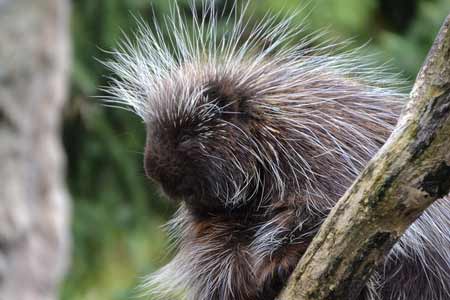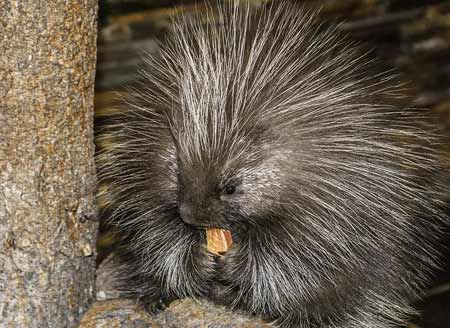Big Sky Wildlife Spotlight: Porcupines
There are dozens of species of porcupines in the world. Thirty million years ago, porcupines traveled across the Atlantic Ocean from Africa to Brazil. They slowly evolved and quickly migrated throughout North and South America. Today, the North American Porcupine happily ranges from Alaska through Canada and into Mexico.

Porcupine | Pixabay Image
Known by the scientific name, Erethizon dorsatum, the North American Porcupine is the second largest rodent in North America. Only the beaver is larger. These animals are easily distinguishable by their thick coat of sharp quills that they use for protection and insulation.
In Latin, the word porcupine means "quill pig." It's fun to spot these solitary and nocturnal creatures that are near-sighted and slow moving in the wild. If you see one, be sure to snap a photo!
Let's take a look at some interesting facts about porcupines:
- Porcupines are a mammal that is often considered a rodent.
- Porcupines are 2 to 3 feet long in their head and body. Their tails can be another 8 to 10 inches long.
- They weigh 12 to 35 pounds.
- To communicate they make grunts and high pitched noises.
- A group of porcupines is called a family.
- Porcupines have soft hair mixed with sharp quills.

Porcupine In Madison Range | Photo: D. Lennon
- Porcupines are covered in quills all over their body except their belly, face, and feet.
- On average, a porcupine has 30,000 quills.
- The quills stand up when a porcupine feels threatened and detach easily when touched.
- If a porcupine loses a quill, it grows a new one.
- A porcupine cannot shoot its quills.
- The quills have scales and barbs at the tips that make them hard to remove.
- The porcupine has natural antibiotics in its skin to prevent infection when it falls and gets stuck by its own quills.
- Porcupines release an odor to alert predators to their presence.
- Porcupines are herbivores that eat fruit, leaves, buds, and lots of wood, bark, and stems.
- The are great climbers that choose to rest in trees.
- On average porcupines live 5 to 7 years in the wild.
- Porcupines breed in the fall and have a 202 day gestation period!
- Baby porcupines are born with soft quills that harden with an hour. They can climb trees the same day they are born.
- Most babies set off on their own within a few months.
- Porcupines do not hibernate, but stick close to their dens during bad weather.
- They usually den in hollow trees or rocky areas.
- Porcupine predators include: wolverines, coyotes, martens, bears, cougars, eagles, owls, fishers, and humans.

Porcupine | Pixabay Image
If you encounter a porcupine in the wild or in your neighborhood, don't worry. As long as you don't approach it or touch it, it will leave you alone. The most likely victim of a porcupine quill to the nose is your pet. If your pet gets stuck by a quill, remove it ASAP.
If you capture a cool porcupine photo when you're in Big Sky Country be sure to share it on social media with #visitbigsky.
See Also:
- Big Sky Wildlife Spotlight: Moose
- Big Sky Wildlife Spotlight: Bighorn Sheep
- Big Sky Wildlife Spotlight: Wolves
- Big Sky Wildlife Spotlight: Mountain Goats
- Big Sky Wildlife Spotlight: Elk
- Big Sky Wildlife Spotlight: Grizzly Bears
- Big Sky Wildlife Spotlight: Bison
- Big Sky Wildlife Spotlight: Rainbow Trout
- Big Sky Wildlife Spotlight: Coyote
- Big Sky Wildlife Spotlight: Mountain Lions
- Big Sky Wildlife Spotlight: Black Bears

